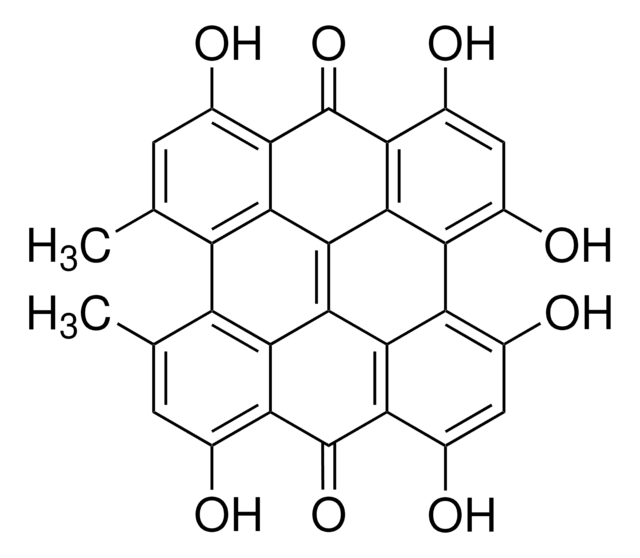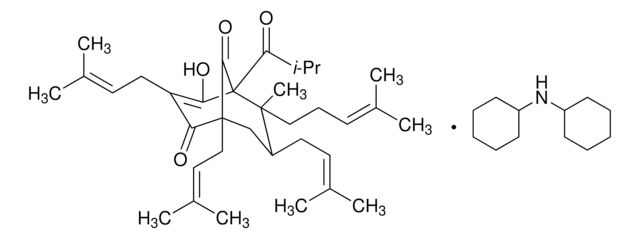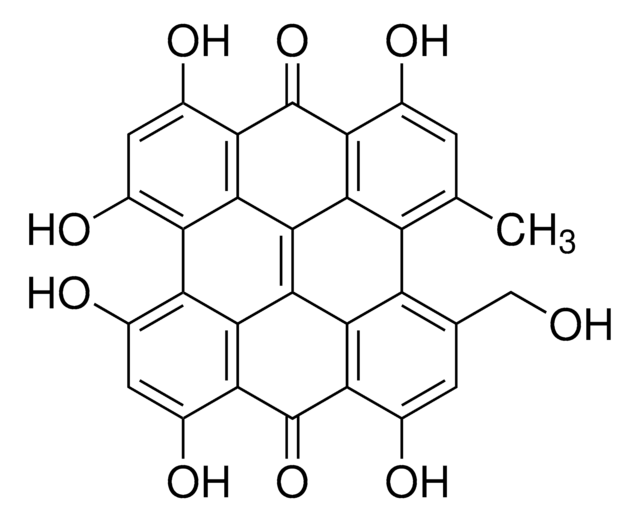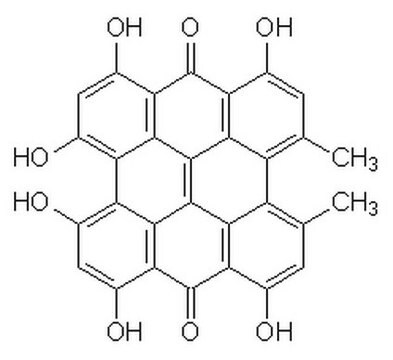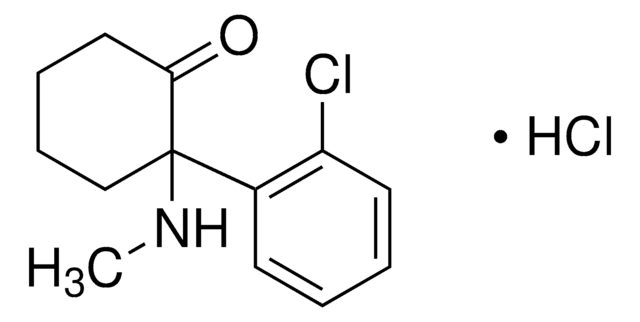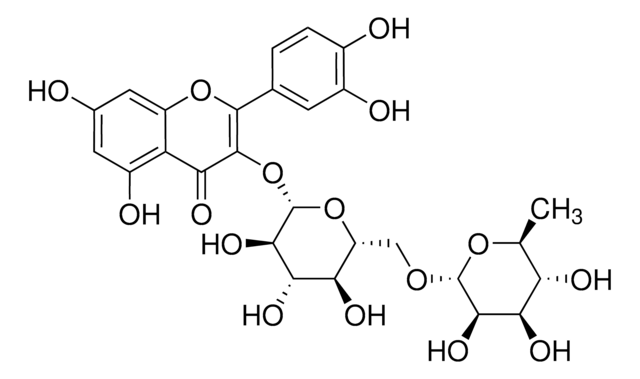About This Item
Recommended Products
Quality Level
assay
≥85% (HPLC)
form
solution
storage temp.
−20°C
SMILES string
CC(C)C(=O)[C@@]12C(O)=C(C\C=C(\C)C)C(=O)[C@@](C\C=C(/C)C)(C[C@H](C\C=C(\C)C)[C@@]1(C)CC\C=C(\C)C)C2=O
InChI
1S/C35H52O4/c1-22(2)13-12-19-33(11)27(16-14-23(3)4)21-34(20-18-25(7)8)30(37)28(17-15-24(5)6)31(38)35(33,32(34)39)29(36)26(9)10/h13-15,18,26-27,38H,12,16-17,19-21H2,1-11H3/t27-,33+,34+,35-/m0/s1
InChI key
IWBJJCOKGLUQIZ-HQKKAZOISA-N
General description
Application
- as a reference standard for calibration curve generation in high-perfornamce liquid chromatography (HPLC) analysis
- to test its cytotoxic effect and apoptosis induction in mouse embryonic cells
- as a pregnane X receptor (PXR) in porcine brain capillary endothelial cells for transport assay
Biochem/physiol Actions
signalword
Danger
Hazard Classifications
Acute Tox. 3 Dermal - Acute Tox. 3 Inhalation - Acute Tox. 3 Oral - Flam. Liq. 2 - STOT SE 1
target_organs
Eyes
Storage Class
3 - Flammable liquids
wgk_germany
WGK 2
flash_point_f
49.5 °F - closed cup
flash_point_c
9.7 °C - closed cup
ppe
Eyeshields, Gloves, type N95 (US)
Choose from one of the most recent versions:
Already Own This Product?
Find documentation for the products that you have recently purchased in the Document Library.
Customers Also Viewed
Our team of scientists has experience in all areas of research including Life Science, Material Science, Chemical Synthesis, Chromatography, Analytical and many others.
Contact Technical Service